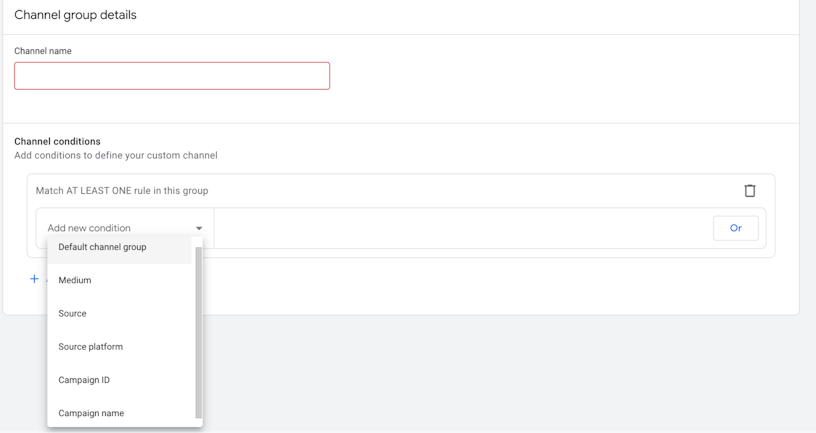Google has announced that you are able to create your own custom channel groupings in Google Analytics 4, giving you more control over how you can interpret your data.
Previously available in Universal Analytics, this feature now brought over to GA4 allows you to configure your traffic groupings to your own preferences, letting you collect data however you see fit.
From the ‘Data Settings’, you can create a custom channel grouping by adding conditions based on the Default channel group, Medium, Source, Source platform, Campaign ID and Campaign name.

This versatile feature allows you to:
- Create new channel groups
- Edit groups
- Edit channels in a group
- Add new channels to a group
- Remove channels
- Reorder channels
- Remove groups
You can filter out irrelevant traffic and have the ability to create incredibly granular reports.
Since GA4 was introduced users have had to become accustomed to a number of changes, one of which being the lack of customisation with regard to channel groupings. The built-in and fixed groups combined with the inability to change definitions encourage more standardised UTM-tagging but have been viewed as restrictive by some. It doesn’t necessarily show what you want and can result in a lot of time spent finding workarounds and manually consolidating your chosen data.
Google did however provide a flow of constant updates that provided new channels, giving a more granularised view of traffic that is much better than the standard UA channel groupings.
For this reason, we think users should stick as closely as possible to these new channel groupings, despite the new customisation options allowing people to make sweeping changes or even be tempted to simply rebuild the old (and inferior) UA channels.
The newly provided channels as stated are more granular, giving us groupings such as Paid Social and Organic Shopping that previously you would have to manually create. This goes hand in hand with the increased number of UTM parameters in GA4, which brings you both more control and specificity over the data you can collect.
All that said, this new feature does allow us to separate very specific traffic which does help in some cases. Emails, for example. Not all emails being sent out are for marketing purposes, and can now be filtered out and not bundled into the Email channel. Edge cases such as this can build up and affect attribution if overlooked. Any customisation to combat this is welcome, especially one that can be applied retroactively.
If you would like more advice on how you can get the most out of your Google Analytics 4 set-up, be sure to read our analytics blogs. If you have any questions about how to set up GA4 for your business, be sure to get in touch.





